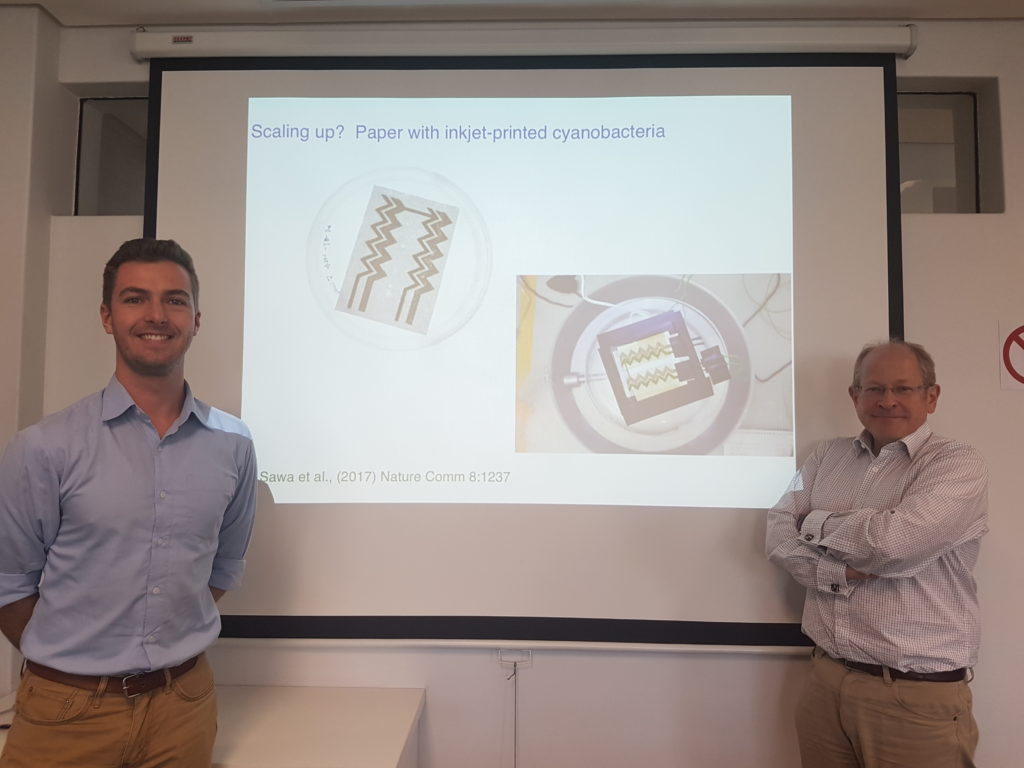Written by Dr Kate Haigh
Postdoctoral Researcher, Department of Process Engineering
khaigh@sun.ac.za
Did you know that it is possible to print bacteria using an inkjet printer to produce biological photovoltaic cells? This is something I learnt when I attended a seminar on 17 July 2018 given by Prof Chris Howe from the University of Cambridge as part of his visit to Dr Robbie Pott at Stellenbosch University. The talk was titled “The Biotechnological Exploitation of of Cyanobacteria”.
Cyanobacteria are more commonly known as blue-green algae, which are found widely in the environment. Water companies sometimes have challenges keeping their reservoirs free of blue-green algae. Some types can fix nitrogen and many can tolerate high temperatures as well as a high or low pH. This means there is a lot of potential for exploiting these bacteria. There are also some funky options for modifying cyanobacteria to allow for a wider range of applications although there is the risk that an ill judged modification will damage the bacteria.
One of the earlier options that was considered for using algae was the production of low value, high volume chemicals such as triglycerides and hydrocarbons. Triglycerides can be transformed into biodiesel by means of a transesterification reaction. Hydrocarbons are also the building blocks for many fuels. The challenge with these applications is that growing the algae in such high volumes is difficult.
An alternative is to focus on high value, low volume chemicals. One example is nutraceuticals such as Spirulina. Alternatively, one type, Phycocyanin is used to produce blue food colouring which was approved by the FDA in 2013.
One of the most promising applications identified by Prof Chris Howe is the the direct production of electricity as a result of cyanobacteria producing electrons. Growing cyanobacteria in water means that electrons are produced and this forms the fuel cell annode (negative electrode). The flow of electrons to the cathode can produce enough electricity to power small electrical devices such as a clock. These devices are known as biological photovoltaic cells. It is envisaged that they could be used to power small off grid electonics.
The next challenge is to find ways to increase the amount of power and develop useful devices. Part of this is about understanding the mechanism which leads to the transfer of electrons outside the cell walls of the bacteria. Designing more efficient devices is also being considered. This led to the development of ink-jet printed bacteria which can produce power as part of biological photo-voltaic cells.

Dr Robbie Pott from the Department of Process Engineering (left) with Prof Chris Howe from the University of Cambridge (right)



